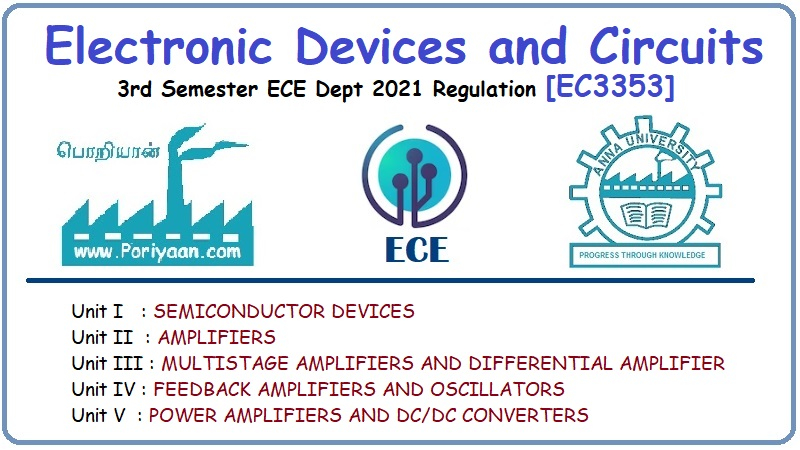Electronic Devices and Circuits: Unit V: Power Amplifiers and DC/DC Converters
Class AB Amplifiers
Construction, Operation, Advantages, Disadvantages
To overcome the cross over distortion in class B amplifiers, we are going for class AB amplifiers. The output signal is obtained for more than 180° but less than 360° of the ac input signal.
CLASS AB AMPLIFIERS
To
overcome the cross over distortion in class B amplifiers, we are going for
class AB amplifiers. The output signal is obtained for more than 180° but less
than 360° of the ac input signal.
The
Q point is adjusted to be slightly above the cutoff region.
Construction and Operation
Class
AB amplifier is a combination of Class A and Class B amplifiers. To eliminate
cross over distortion in class B push pull amplifiers, biasing is required. Q
point of the transistor lies between that of Class A and Class B type
amplifiers. A complementary symmetry Class B amplifier can be converted to
Class AB amplifier by selecting resistor values such that VBE of
both T1 and T2 makes transistor away from the cut-off
point i.e VBE > 0.6 V.

The
conduction angle of class AB amplifier is between 180° and 360°. There is no
instant where both transistors are OFF simultaneously and thus cross-over
distortion is eliminated. The efficiency of class AB power amplifier is around
70%.

Q
point is not positioned at cut-off and there will be a small amount of
collector current at zero input.

Advantage
1.
No cross over distortion
2.
Bulky coupling transformers are not required
Disadvantage
1.
Less Efficiency compared to Class B configuration.
2.
There will be some de components in the output as the load is directly coupled.
3.
Capacitive coupling can eliminate de components but it is not practical for
heavy loads.
Electronic Devices and Circuits: Unit V: Power Amplifiers and DC/DC Converters : Tag: : Construction, Operation, Advantages, Disadvantages - Class AB Amplifiers
Related Topics
Related Subjects
Electronic Devices and Circuits
EC3353 - EDC - 3rd Semester - ECE Dept - 2021 Regulation | 3rd Semester ECE Dept 2021 Regulation
